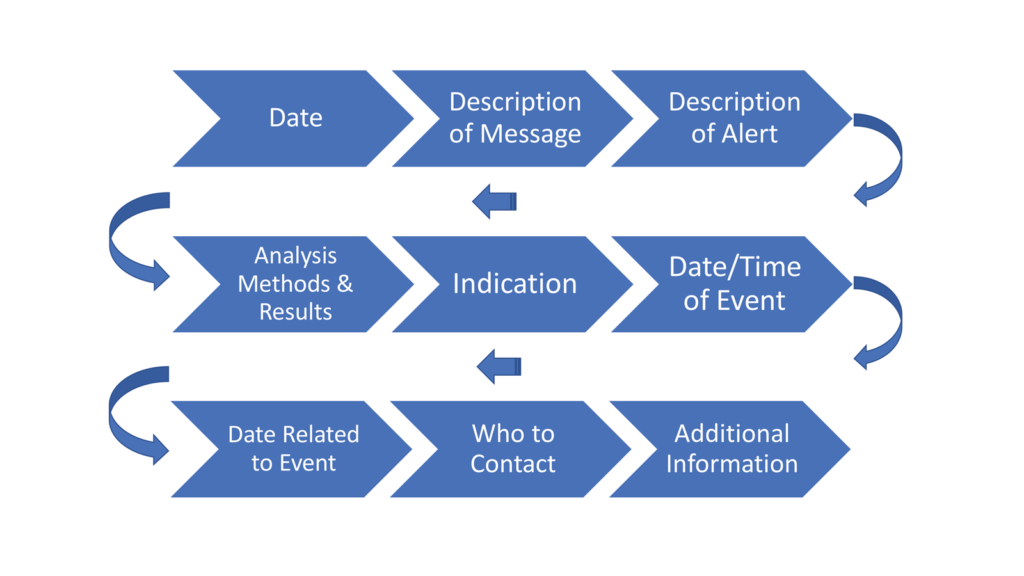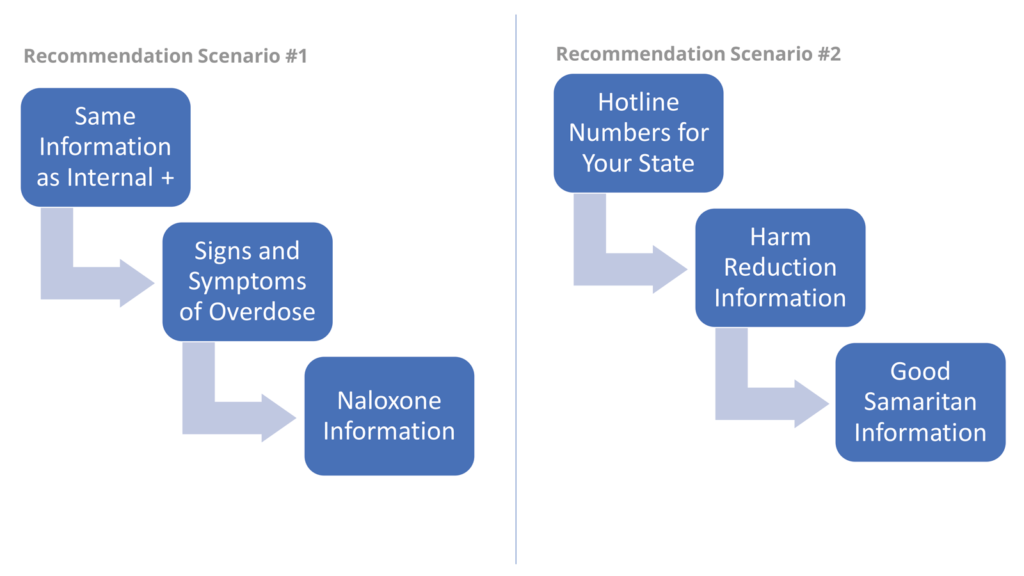
Communicating with Partners
Last Updated: August 2022
Developing A Communication Plan
Developing a communication plan is based on the process and activities created as part of the response plan and identifying all communication intersects. Such a plan will help identify the audience for any communications created (Minnesota’s Overdose Cluster Response Messaging Plan). It’s also important to identify and prioritize the key information which needs to be shared. For example, in the case of internal alerts, information on harm reduction resources in the community or signs and symptoms of overdose does not need to be shared, because the target audience is already familiar with this information or knows the channels to access additional needed information.
The health department (state, regional, local) will need to reexamine their role in overdose response, as it is not the same as in emergency response. In an emergency response, the health department is the first source of the pertinent information and activates a pre-arranged response. In an overdose response, the health department’s role is to validate and confirm other sources of information, and the health department response may be delayed by hours or days compared to other front-line workers. This is why it is important to have a functional network of stakeholders in the community providing information. If we compare the overdose to the analogy of a spiderweb, when the overdose hits the web (our networked community of stakeholders), we can respond like a spider because no matter where it hits, we are all connected and communicating.
Methods of Communication
There are many ways to communicate overdose outbreaks and spike alert information with stakeholders including email, text message notification, dashboards, social media, and existing emergency response systems. Each method has benefits and drawbacks, and the method chosen should be based on the audience, as well as the time sensitivity of the message.
Email is a convenient way to send a message to a large number of recipients at designated time. The content can be controlled by the sender and created for the audience. Disadvantages include recipients not opening the email in a timely fashion, turnover of stakeholders in critical roles resulting in returned emails, and email lists which need to be continually reviewed and updated.
Text notifications which require stakeholders to opt into messaging are widespread, especially for focused or public notifications. For these notifications to have wide reaching effectiveness, a good deal of front-end effort is needed to grow the “opt in” population who are receiving the notifications. Another potential problem is the messages need to be short and due to smishing and other concerns, links to additional information are not a good addition to these text messages.
Dashboards are useful ways to communicate consistently with stakeholders on the measures of interest. Stakeholders can access the dashboard as needed, and dashboards can be created to update automatically with the most important metrics from a variety of data sources at regular intervals.
Social media is another tool used to communicate messages with stakeholders. There are many platforms, and different generations have preferences for different ones including Facebook, Instagram, TikTok, and Twitter. These platforms may be more helpful when sharing public messages, notifications, or actionable steps.
Quick Response or QR codes are matrix barcodes which can be scanned from smart phones and used to link to URL (uniform resource locator) or website addresses where messages have been posted. QR codes can be useful when hyperlinks can’t be used or typing in the URL takes too long.
Multilingual Communication
States and local communities should be aware of the need to create targeted public messaging in languages other than English to reach their entire constituency with messages. Start by identifying specific languages and dialects spoken in the target area. Use a professional interpreter to ensure message consistency. Translate verbal and written messages into multiple languages. Avoid acronyms as much as possible, as they may not translate or may have different meanings in different languages.
Communication Content
Developing the content of communications may be best accomplished through a stakeholder workgroup. Using collaborative input from the recipients of the intended messages can help accomplish the goals of sharing these communications. Some of the suggested best practices for content inclusion are listed for each type of stakeholder.
Recommended content to share with internal stakeholders:

Recommendations for external stakeholder communications:

Communicating with the Public
Work with the public health agency’s communications staff to create specific messages for each of the communication methods decided upon. While some staff members will have the subject matter knowledge to contribute content for these communications, the communications staff will be best prepared to assist with public release of the information according to the rules of the organization and in accordance with state laws.
Toolkit Resources
Get more insights by using our toolkit resources.
Go to Resources
Glossary
Learn the definition of the key words being used.
Go to Glossary
Thanks
Thank you, to all of our contributors.
View our contributors

the public’s health.
Contact Us
Have any questions or recommendations, you can contact us at overdose@cste.org
